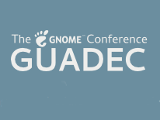Reworking the desktop distribution
The traditional model of a GNOME desktop is tightly tied to the traditional model of a Linux distribution: many packages that are individually installed onto the users system; some are low-level system services, some are core desktop components, and some are applications. While in some ways very
flexible, this model is also fragile: the continuing correct operation of the system depends on a complex dance of installation and upgrades of thousands
of packages. Systems based on free software components, from OLPC, to ChromeOS, to Android have moved away from this model, but are no longer recognizable as a Linux distribution.
Upcoming releases of Fedora Workstation will offer an alternate installation method where the operating system is distributed as an ostree image and atomically upgraded as a whole, while applications are installed on top as xdg-app bundles. The intent is to provide an experience that is much more
robust than the traditional package-based installation, while providing additional flexibility in installing applications. Applications will no
longer be strictly bound to the Fedora package set, making it easy for third parties to provide applications that work across multiple distributions and distribution versions. The talk will go over the underlying technologies and discuss how they interact with a traditional distribution ecosystem, and with
the evolving ecosystem of xdg-app. There will also be discussion of how users, such as developers, need to work differently on such a system, and how we can best enable that.
